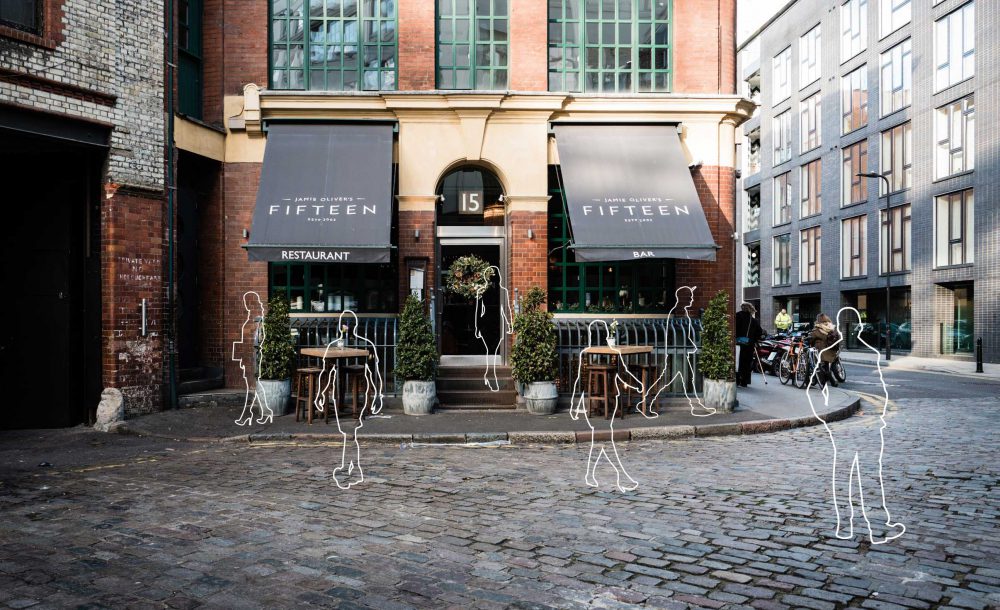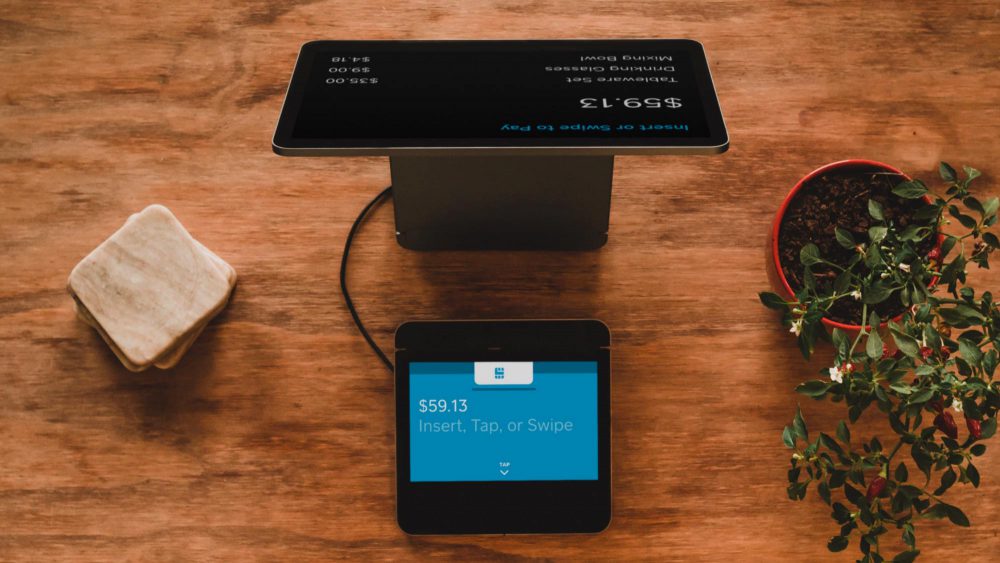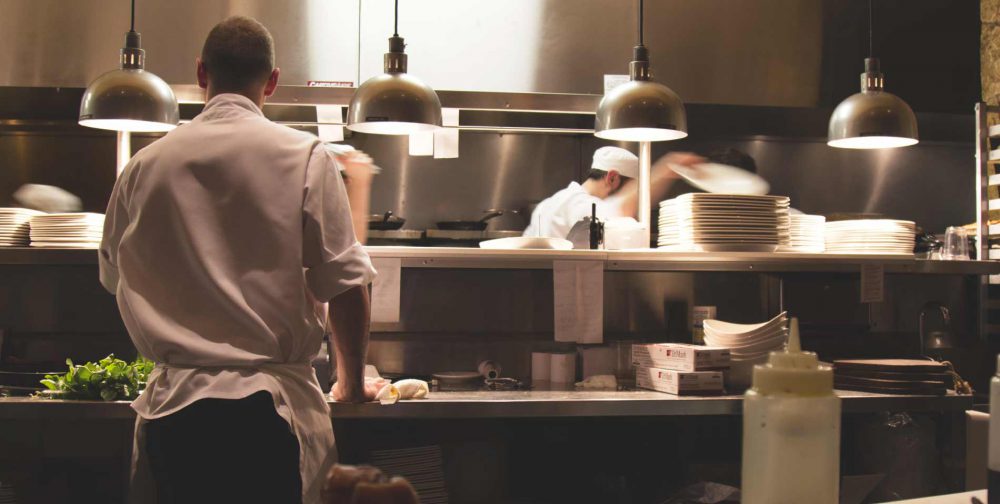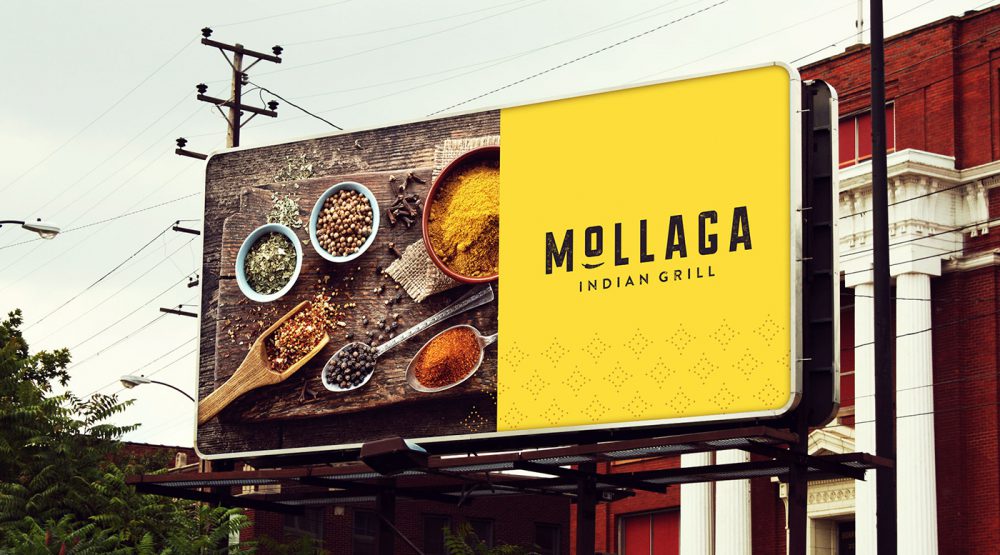Building a Clear Brand Story for Your Restaurant
January 28, 2020
Jeremy Wells
Branding.
The marketing term that every business knows they need to focus on, but very few know what it actually means. Your brand is so much more than your logo, name, or tagline. Your brand is your reputation, your promise, your story.
Why is a story important in 2020? A story behind your business is vital now more than ever before – because competition has increased more than ever before, especially for those in the restaurant industry.
Not only are you competing against other restaurants nearby, but you are also competing against any restaurant who is close enough to deliver. You are competing against grocery stores, meal delivery services, meal kit delivery services, grocery delivery services – on top of competing against literally anything else your potential customers could be spending their money on instead of coming to your restaurant.
In this arena of heightened competition, it is not enough to produce a quality product. Quality is already a must – if you aren’t producing a quality product, you won’t be in business very long.
You have to make your customers care about your business – and that is achieved through branding.
What is a story?
A brand story isn’t just a bit about you, or why you started the business – in fact, your brand story doesn’t even refer to words at all, necessarily. The colors you use, the décor you choose, the way your team members behave, the plating, the lighting, your menus – anything that is a visual element of your business – can help paint your brand story.
You’ll use these elements to create a cohesive story across multiple channels that evoke emotion in your guests. Your story should be evident in your interior design, curb appeal, social media, print advertising, website, training, and service experience. If there is something on the list we missed – your story should probably be there too.
Developing Your Restaurant’s Brand Story
OK – you understand the importance of creating a brand story. How do you start?
It starts with a strategy.
First, you need to understand how your restaurant came to exist. What is the story behind the beginning of your business? Are you an entrepreneur who has always loved tacos, even though you can’t really cook? Are you two best friends who combined your passion for food to create wholesome meals for your community? What is the story behind the business?
Next, you need to have a strong idea of what you do. Too many “good” restaurants fail because they lack consistency. What type of food do you provide? Do you provide anything else like entertainment or experiences? Are all of these components in alignment? For example, you wouldn’t want to have karaoke at an elegant steak restaurant.
Third, you need to know who you do this for. Are you a restaurant that caters to families? Are you a romantic bistro that is perfect for celebrating anniversaries? Would anyone feel comfortable in your casual environment – or is your restaurant more upscale and trendy? Do you have the appropriate accommodations for large groups, or is your space better suited for smaller groups? Who is your target market?
Fourth – why do you do it? What is your larger goal? What is your purpose? How does your restaurant benefit your ideal guest and your community at large?
Fifth – how do you do it? How do you accomplish what you do? How do you create meaningful experiences for your guests? How do you ensure quality, even when you aren’t present?
Sixth – where do you want to go? Your goals really need to play a big part in shaping what you do now and where you are headed. Think about ways you can evolve to create the best experiences for your guests and even your employees.
Once you have a strong understanding of each of these 6 elements, you have the foundation for your story. Next, we’ll go over the basics of incorporating this story into elements of your restaurant.
Incorporating Your Brand Story into Your Restaurant
Every element of your restaurant – from the food to the décor – will need to help tell your story. This is what helps create positive, lasting experiences for your guests.
Food & Beverage
When you conceptualized your restaurant, you probably started with the food and beverage. This is how most restaurants are born. Incorporating your brand story into your food and beverage options is crucial.
What you serve your guests will elicit responses from multiple senses including sight, taste, and smell. By exciting these senses, you create lasting memories that will help keep your business stuck in the guest’s mind long after they’ve dined.
The key to incorporating your brand story into your food and beverage is to have a strong understanding of your target market. Once you know who you do “this” for, you can build upon their emotions and concerns – and personalize the food and beverage experience to this audience specifically.
What does this look like in practice? It means not building out a robust children’s menu when your restaurant is catered towards couples – or it means creating family-style dishes that everyone will enjoy if that is your target market. It means creating sophisticated cocktails with unique and subtle flavors for your elegant restaurant, or maybe not serving alcohol at all if you are catering towards families. Building cohesion between your story and your menu is the first step to implementing storytelling throughout your business.
Customer Service
Next, you’ll need to make sure your guests have an appropriate experience when they arrive. What happens when guests have unexpected experiences? Too many times they create negative associations. Here’s an example that the Washington Post reported on earlier last summer – “Outback Steakhouse told a family to leave because their special-needs son was being too loud.”
Now, of course, this just seems “wrong” to many of us. But what really drives the point home is how inconsistent it is with their brand story. Take a look at Outback’s menu – there is a section specifically for children. Take a look at their ads – and while yes, many of them are just close-ups of food – there are quite a few that feature families enjoying a meal. Their interior space is designed for large groups and, assumingly, families.
The story would probably look a little different if it said: “Very Expensive Maryland Steakhouse Asks Family to Leave.” Well – if you bring noisy kids to an upscale restaurant, you would probably expect to be asked to leave. This story probably wouldn’t have even made the news.
But Outback Steakhouse is a seemingly “family-oriented” restaurant.
This example shows why it is critical that every component of your brand aligns closely with your story. This is how you keep your expectations, as well as the guest’s expectations, on the same exact page. When everyone knows what to expect, and their expectations are met (or better yet – exceeded), then you become one of your guest’s favorite places to be.
If you don’t deliver on expectations or aren’t clear in setting those expectations – it can result in anger, mistrust, confusion, and sometimes even negative press.
Creating positive experiences for your guests has a big part to do with your staff. In the Outback example, of course, corporate said that the manager was not trained well and that this went against their policies. But who is responsible for making sure the manager understands what to do in these types of situations?
In your restaurant, you are. And it is impossible for you to conceive of every possible scenario that could come up and tell your team exactly how to handle it. So instead, you must provide them with a framework to use so that they can make responsible decisions in tough situations like these.
If you are a family-oriented restaurant, then you make sure everyone knows that you LOVE families. Families pay your bills. Families are the blood to the success of your business – and so families are very, very welcome in your restaurant.
If you make that clear to every employee, from the top to the bottom – then if an elderly couple without children complains that a table with children is being too loud – your manager doesn’t try to throw the family out. Families are important, right?
Instead – maybe they ask the elderly couple to move to another, quieter table. This solves the issue without offending the family in question.
Design & Décor
As we mentioned in the infamous Outback example – your design elements play into your story, too. Do you have large tables or small ones? Do you serve your food on fragile china or Styrofoam?
You can use these interior and exterior design elements, as well as your décor, to help build upon your brand story. When this component of your restaurant is well done, you create an experience that people want to have over and over again. When it is not, it makes it more difficult for your guests to connect to your deeper brand story. If your guests have trouble connecting with your brand story, then they will not keep you in mind the next time that they decide to go out to eat.
When it comes to design and décor, you want it all to align closely with what your guests would expect to find at your kind of establishment. What this means is you wouldn’t put fragile, flaming candles on tables where you expect to seat a lot of children. You probably also wouldn’t create a wall-to-wall bar. However, if you are intending to be more of an “after-work happy hour” place – then absolutely build a gorgeous bar.
Now, aligning with guest expectations does not mean it has to be boring. In fact, quite the opposite. The most successful restaurants find unique ways to bring out their stories. Going back to the example of the flaming candle – that might be out. But instead, you could incorporate some funky artwork on the walls or interesting lighting fixtures.
One example of this that is done especially well is the restaurant at the Spearfish Canyon Lodge in Spearfish, South Dakota. The lodge is beautifully decorated, but also includes touches of the outside in taxidermized animals, lamps made of horns, and ornate stone fireplaces. Some of the fragile décors might suggest that children aren’t welcome – but that isn’t the type of story the Lodge wanted to tell.
To help remedy this, at every table, the tablecloth is made of thick paper, and the tables all have small baskets of crayons. Guests, young and old alike, are encouraged to draw on the tablecloths while waiting for their food to arrive – or waiting for others to finish eating.
By incorporating this element, the Lodge makes it clear that its main dining room is a welcome space for every guest, while still incorporating unique decorative elements that you might not normally find in family-friendly restaurants.
Benefits of Your Brand Story
By incorporating your brand story consistently throughout every component of your business, you build emotional connections with your customers. That is important because then when your customers receive an email from your business and the business across town, they are more likely to see what kind of promotion you might be offering them, or what new menu item you have. When they are trying to decide if they want to order a meal-delivery kit from that online company that they don’t have a strong emotional connection with or eat at your restaurant next week for dinner, they are more likely to choose your restaurant.
Brands with a strong story, who meet (or exceed) customer expectations every single time outlast those who don’t. If you can make your brand and your story resonate with your customers – then not only will they come back over and over again, but they will also tell their networks your story, and refer your business to their friends and colleagues. So not only do you get the benefit of repeat business, but you will also receive the benefits of word-of-mouth marketing and referrals.
Focusing on your brand story is one of the best ways you can ensure the success of your restaurant.

Connect with Longitude°
Searching for a hospitality branding agency to partner with on your next project? Fill out the form below and let’s talk. Or you can email info@longitudebranding.com
Jeremy Wells
Partner at Longitude°
Jeremy is the author of Future Hospitality and Brand Strategist at Longitude°. As a member of the Education Committee for The Boutique & Lifestyle Leaders Association (BLLA) and a content contributor to Cornell University’s Hospitality Vision and Concept Design graduate program, he is a committed thought leader in hotel branding, concepting, and experience strategy.






